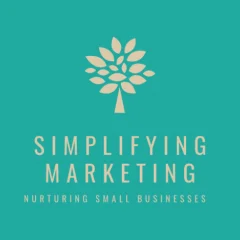Effective communication and collaboration are essential for success. Whether you’re leading a team, working with clients, or navigating the complexities of a global market, the ability to communicate clearly and collaborate efficiently can make or break your endeavors. However, amidst the myriad of strategies and techniques employed in business, why do people often resort to jargon when discussing these critical aspects?
Understanding Communication in Business
Communication in business goes beyond mere verbal exchanges; it encompasses the entire process of conveying information, ideas, and feedback. From emails and meetings to presentations and reports, every interaction plays a pivotal role in shaping the culture and productivity of an organization.
Importance of Clear Communication
Clear communication fosters transparency, reduces misunderstandings, and promotes alignment towards common goals. It empowers employees to share their thoughts, ask questions, and provide valuable input, thereby fostering a culture of openness and collaboration. Moreover, clear communication enhances decision-making processes, as stakeholders can make well-informed choices based on accurate information.
Challenges in Communication
Despite its importance, effective communication remains a challenge for many businesses. Communication barriers such as language differences, cultural nuances, and hierarchical structures can impede the flow of information and hinder collaboration. Moreover, the rise of digital communication platforms has introduced new complexities, with email overload, misinterpretation of tone, and information overload being common issues faced by modern organizations.
Collaboration: The Key to Success
Collaboration is the cornerstone of innovation and growth in today’s interconnected world. By bringing together diverse perspectives, skills, and resources, collaboration enables teams to tackle complex challenges, drive creative solutions, and achieve collective goals.
Benefits of Collaboration
Collaboration fosters synergy, where the combined efforts of individuals result in outcomes greater than the sum of their parts. It encourages knowledge sharing, skill development, and cross-functional learning, thereby enhancing the overall capabilities of the organization. Furthermore, collaboration promotes a sense of belonging and camaraderie among team members, leading to higher morale and job satisfaction.
Overcoming Collaboration Barriers
Despite its benefits, collaboration is not without its challenges. Siloed thinking, conflicting priorities, and egos can hinder collaboration efforts and impede progress. Additionally, geographical dispersion and time zone differences can further complicate collaboration in today’s globalized world. However, by fostering a culture of trust, inclusivity, and open communication, organizations can overcome these barriers and harness the power of collaboration effectively.
The Role of Jargon in Business Communication
In the realm of business communication, jargon often creeps into conversations, presentations, and written documents. While some view jargon as a necessary evil, others see it as a barrier to effective communication. So, why do people use jargon in business communication, especially when discussing topics like communication and collaboration?
1. Clarity and Precision
One reason for the use of jargon is to convey complex ideas or concepts in a concise and precise manner. In specialized fields such as technology, finance, or healthcare, jargon serves as a shorthand for communicating with colleagues who possess domain-specific knowledge. By using industry-specific terminology, individuals can convey information more efficiently and avoid ambiguity.
2. Cultural Signaling
Jargon can also serve as a form of cultural signaling within organizations or industries. By using specialized language, individuals signal their expertise, credibility, and insider status to peers and stakeholders. In this context, jargon acts as a form of tribal language, reinforcing group identity and solidarity among members of a particular profession or industry.
3. Efficiency and Exclusivity
In some cases, the use of jargon may be driven by a desire for efficiency or exclusivity. By using technical terms or acronyms familiar only to insiders, individuals may exclude outsiders from the conversation or expedite communication among colleagues. However, this efficiency can come at the cost of alienating those who are not familiar with the jargon, leading to misunderstandings and misinterpretations.
4. Habit and Tradition
In many industries, the use of jargon has become ingrained in the culture and practices of the workplace. Over time, certain phrases, buzzwords, or acronyms become commonplace, perpetuated by industry publications, conferences, and training programs. As a result, individuals may use jargon without consciously considering its impact on communication, relying on familiar language patterns out of habit or tradition.
Striking a Balance: Clear Communication vs. Jargon
While jargon may serve a purpose in certain contexts, its indiscriminate use can hinder effective communication and collaboration in business. To strike a balance between clarity and precision, organizations should prioritize clear and accessible communication while being mindful of the audience and context.
Tips for Effective Communication:
- Know Your Audience: Tailor your communication style and language to suit the knowledge and expertise of your audience. Avoid jargon when speaking to non-specialists or external stakeholders.
- Simplify and Clarify: Whenever possible, use plain language and provide context to help others understand complex concepts or ideas. Avoid unnecessary technical terms or acronyms that may confuse or alienate listeners.
- Encourage Feedback: Create an environment where team members feel comfortable asking questions, seeking clarification, and providing feedback. Encourage active listening and open dialogue to ensure mutual understanding and alignment.
Cultivating a Culture of Collaboration:
- Lead by Example: As a leader or manager, demonstrate the value of collaboration through your actions and behavior. Encourage teamwork, cross-functional collaboration, and knowledge sharing among team members.
- Promote Inclusivity: Foster a culture of inclusivity where every voice is heard and valued, regardless of hierarchy or background. Encourage diverse perspectives and create opportunities for collaboration across departments or disciplines.
- Provide Resources and Support: Equip teams with the tools, resources, and training they need to collaborate effectively. Invest in technology platforms, communication tools, and team-building activities that facilitate collaboration and strengthen relationships.
In conclusion, effective communication and collaboration are essential for success in today’s dynamic business environment. While the use of jargon may have its place in certain contexts, organizations must prioritize clarity, inclusivity, and collaboration to drive innovation, foster growth, and achieve sustainable success.
Explore FAQs about communication and collaboration to enhance your managerial skills.
Communication and Collaboration FAQ
- Communication and Collaboration
- What does Promoting synergy mean?
Promoting synergy involves leveraging the combined strengths, talents, and perspectives of individuals or groups to achieve greater effectiveness, efficiency, and innovation. It entails fostering collaboration, alignment, and mutual support among diverse stakeholders to create a harmonious and mutually beneficial working environment where the whole is greater than the sum of its parts.
- What does Seamless integration mean?
Seamless integration refers to the smooth and efficient merging or incorporation of various elements, processes, or systems into a unified whole without disruptions or inconsistencies. It involves ensuring compatibility, interoperability, and continuity between different components or functions to enhance performance, functionality, and user experience while minimizing disruptions and complexities.
- What does Strengthening connections mean?
Strengthening connections involves building and nurturing meaningful relationships, networks, and partnerships with stakeholders both within and outside an organization. It includes fostering trust, communication, and mutual support to enhance collaboration, knowledge-sharing, and opportunities for growth, thereby enriching the organization’s social capital and competitive advantage.
- What does Sync up mean?
“Sync up” means to coordinate or align activities, schedules, or information among individuals or groups to ensure harmony, consistency, or compatibility. It involves bringing people or processes into alignment, facilitating communication, and resolving discrepancies or discrepancies to enhance efficiency, effectiveness, and cohesion in achieving shared objectives.
- What does Take it offline mean?
“Take it offline” is a phrase used to suggest continuing a discussion or addressing a matter outside of the current meeting or public forum. It implies dealing with the issue separately, perhaps in a smaller group or private setting, to delve into details, resolve concerns, or explore options without taking up more time or attention in the current context.
- What does Touch base mean?
“Touch base” is an informal expression meaning to make contact or communicate briefly with someone, often to exchange information, provide updates, or check in on progress. It implies reaching out to connect or reconnect with someone, typically to maintain awareness, alignment, or rapport regarding a particular matter, project, or relationship.
- What does Move the needle mean?
“Move the needle” is a metaphorical expression used to describe making significant progress or achieving tangible results in a particular area or endeavor. It implies taking actions or implementing strategies that lead to noticeable and impactful changes, often in terms of performance, growth, or improvement, rather than mere incremental adjustments.
- What does Open lines of communication mean?
Open lines of communication refer to establishing channels through which information, ideas, and feedback can flow freely within an organization or between individuals. It involves creating an environment where people feel comfortable expressing themselves, sharing thoughts, seeking clarification, and engaging in constructive dialogue without fear of reprisal or judgment.
- What does Promoting inclusivity mean?
Promoting inclusivity involves creating an environment where all individuals feel valued, respected, and included regardless of their background, identity, or perspective. It entails fostering a culture of diversity, equity, and belonging where everyone has equal opportunities to participate, contribute, and thrive, thereby enriching the organization’s collective experience and success.
- What does Cultivating trust Mean?
Cultivating trust involves establishing confidence, reliability, and integrity in relationships through consistent behavior, transparency, and honesty. It requires mutual respect, active listening, and open communication to build a foundation of trust and credibility over time. Cultivating trust fosters cooperation, collaboration, and loyalty by creating a safe and supportive environment where individuals feel comfortable taking risks, sharing ideas, and working towards common goals. In business, cultivating trust is essential for fostering productive partnerships, attracting and retaining customers, and achieving sustainable success in a competitive market.
- What does Dive deep Mean?
Diving deep refers to thoroughly examining or exploring a topic, issue, or problem to gain comprehensive understanding and insight. It involves asking probing questions, conducting detailed research, and analyzing data or information to uncover underlying complexities, patterns, or root causes. Diving deep enables individuals or teams to identify opportunities, anticipate challenges, and make informed decisions by gaining deeper insights into the factors influencing a particular situation or outcome.
- What does Drill down Mean?
Drilling down involves focusing on specific details, components, or aspects of a larger topic, concept, or dataset to gain clarity or insight. It requires breaking down complex information into smaller, more manageable parts and examining them in greater detail or depth. Drilling down helps individuals or teams to analyze data, identify trends, and pinpoint areas for improvement or optimization by zooming in on specific aspects or variables relevant to their objectives or inquiries.
- What does Empowering dialogue Mean?
Empowering dialogue involves fostering open, inclusive, and constructive communication that empowers individuals to express their ideas, opinions, and concerns freely. It requires creating a supportive environment where all voices are heard, valued, and respected, regardless of hierarchy or status. Empowering dialogue promotes collaboration, innovation, and consensus-building by encouraging active participation, sharing diverse perspectives, and seeking common ground to address challenges or achieve shared goals collectively.
- What does Encouraging engagement Mean?
Encouraging engagement involves motivating and inspiring individuals to actively participate, contribute, and get involved in activities, discussions, or initiatives. It requires creating opportunities for interaction, collaboration, and shared decision-making to foster a sense of ownership and commitment among participants. Encouraging engagement enhances teamwork, creativity, and productivity by empowering individuals to leverage their skills, expertise, and diverse perspectives to achieve collective success and drive positive change within organizations or communities.
- What does Encouraging transparency Mean?
Encouraging transparency involves promoting openness, honesty, and accountability in communication and decision-making processes. It requires sharing relevant information, providing clear explanations, and soliciting feedback to ensure clarity and understanding among stakeholders. Encouraging transparency builds trust, credibility, and goodwill by demonstrating integrity, fairness, and respect for the interests and concerns of others. In business, encouraging transparency is essential for building strong relationships, fostering collaboration, and maintaining ethical standards and public trust in organizations’ actions and operations.
- What does Enhancing communication Mean?
Enhancing communication involves improving the effectiveness, clarity, and impact of messages exchanged between individuals or groups. It requires using appropriate channels, language, and techniques to convey information, ideas, or feedback clearly and accurately. Enhancing communication involves active listening, empathy, and adaptability to ensure mutual understanding and engagement among participants. It fosters collaboration, productivity, and innovation by reducing misunderstandings, resolving conflicts, and building stronger relationships based on clear and transparent communication.
- What does Enhancing cooperation Mean?
Enhancing cooperation involves promoting collaboration, teamwork, and mutual support among individuals or groups to achieve common goals or objectives. It requires fostering a culture of shared purpose, trust, and respect where individuals are encouraged to collaborate, communicate openly, and leverage each other’s strengths and resources. Enhancing cooperation fosters synergy, innovation, and collective success by breaking down silos, promoting knowledge sharing, and aligning efforts towards achieving shared outcomes or addressing complex challenges effectively.
- What does Facilitating dialogue mean?
Facilitating dialogue means encouraging and guiding conversations between individuals or groups to enhance understanding, promote collaboration, and address issues effectively. It involves creating an environment where communication flows freely, ideas are exchanged, and mutual respect is fostered.
- What does Action items Mean?
Action items refer to specific tasks or activities that need to be completed in order to achieve a particular goal or objective. These are actionable steps that individuals or teams agree upon during meetings or discussions to move forward with a plan or project. They often include deadlines, responsible parties, and expected outcomes to ensure accountability and progress.
- What does Foster collaboration mean?
Foster collaboration refers to nurturing an environment where individuals or teams work together effectively towards common goals. It involves promoting teamwork, sharing knowledge and resources, encouraging open communication, and fostering a culture of mutual support and trust to achieve desired outcomes.
- What does Active listening Mean?
Active listening is a communication technique where the listener fully concentrates, understands, responds, and remembers what is being said. It involves paying close attention to verbal and non-verbal cues, demonstrating empathy, asking clarifying questions, and providing feedback to ensure mutual understanding. Active listening fosters meaningful dialogue, builds trust, and promotes effective collaboration by ensuring that all parties feel heard and valued in the conversation.
- What does Fostering teamwork mean?
Fostering teamwork involves creating conditions that encourage individuals to work together cohesively towards shared objectives. It includes promoting collaboration, communication, and mutual respect among team members, leveraging each person’s strengths, and ensuring alignment towards common goals for collective success.
- What does Brainstorm Mean?
Brainstorming is a creative problem-solving technique used to generate a large number of ideas or solutions in a short amount of time. It encourages participants to freely express their thoughts, opinions, and suggestions without judgment. During a brainstorming session, individuals or teams explore various possibilities, consider different perspectives, and build upon each other’s ideas to uncover innovative solutions or strategies to address a specific challenge or opportunity.
- What does Improving alignment mean?
Improving alignment refers to ensuring that all stakeholders within an organization understand and are in agreement with its goals, strategies, and actions. It involves clarifying objectives, communicating expectations clearly, and aligning individual and team efforts with overarching organizational objectives for greater efficiency and effectiveness.
- What does Building consensus Mean?
Building consensus involves reaching a collective agreement or understanding among a group of individuals with different perspectives, interests, or priorities. It requires open communication, active listening, and constructive dialogue to identify common goals, resolve conflicts, and find mutually acceptable solutions. Building consensus fosters collaboration, strengthens relationships, and promotes unity within teams or organizations by ensuring that everyone feels heard, respected, and committed to the final decision or course of action.
- What does Let's circle back mean?
“Let’s circle back” is a phrase used to suggest revisiting a topic or issue at a later time or after gathering more information. It implies temporarily moving on to other matters with the intention of returning to the current topic for further discussion, analysis, or decision-making at a later, more opportune moment.
- What does Building rapport Mean?
Building rapport refers to establishing a positive and harmonious relationship with others based on mutual trust, respect, and understanding. It involves attentive listening, empathy, authenticity, and shared experiences or interests to create a connection and foster a sense of camaraderie. Building rapport is essential in business settings as it enhances communication, facilitates collaboration, and promotes long-term partnerships or alliances by building a foundation of trust and goodwill between individuals or organizations.
- What does Creating a shared vision Mean?
Creating a shared vision involves articulating a compelling and inspiring picture of the future that aligns with the values, aspirations, and goals of individuals or organizations. It requires collaborative visioning, strategic planning, and effective communication to engage stakeholders, build consensus, and mobilize collective efforts towards a common purpose or mission. Creating a shared vision provides clarity, direction, and motivation to guide decision-making and action, fostering unity and commitment among stakeholders to work towards a shared goal or desired outcome.
- What does Cultivating relationships Mean?
Cultivating relationships involves nurturing and developing meaningful connections with others over time. It requires genuine interest, empathy, and mutual respect to build trust and rapport, whether in personal or professional contexts. Cultivating relationships involves maintaining regular communication, offering support, and demonstrating integrity and reliability to strengthen bonds and foster a sense of loyalty and collaboration. In business, cultivating relationships is essential for networking, fostering partnerships, and achieving mutual success by leveraging the power of connections and building a strong support network.


